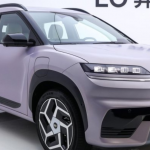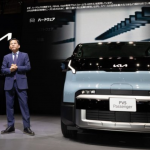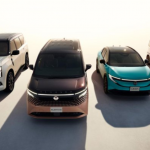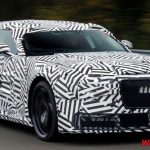Audi has once again proven why it stands at the forefront of automotive innovation. With the debut of the 2025 Audi Q3, the German automaker introduces a revolutionary lighting system — Micro-LED headlights with adaptive projection technology.
This new feature represents a leap forward in both safety and aesthetics, blending form and function in true Audi style. While LED and Matrix LED systems have already set high benchmarks, Micro-LED brings precision, adaptability, and intelligence that take vehicle illumination to an entirely new level.
Let’s explore how Audi’s latest lighting innovation transforms the driving experience and strengthens its reputation for technological excellence.
The Evolution of Automotive Lighting: From Halogen to Micro-LED
Before diving into the specifics of the Q3’s latest lighting system, it’s important to understand how far automotive lighting has come.
- Halogen Headlights: Once the industry standard, they offered basic illumination but lacked efficiency and longevity.
- Xenon (HID) Headlights: Provided brighter light and a whiter tone but consumed more power and required complex assemblies.
- LED Headlights: Revolutionized automotive lighting with energy efficiency, sharp design flexibility, and longer lifespan.
- Matrix LED Systems: Introduced intelligent beam control, automatically adjusting light distribution to avoid dazzling other drivers.
Now, with Micro-LED technology, Audi moves into the next era — one that brings unprecedented precision, versatility, and safety enhancements.
What Are Micro-LED Headlights?
Micro-LED headlights are a new generation of solid-state lighting technology where thousands of microscopic LEDs are integrated into a compact module. Each Micro-LED can be individually controlled, allowing the system to create dynamic lighting patterns and adaptive projections on the road surface.
Compared to traditional LEDs, Micro-LEDs are significantly smaller, more energy-efficient, and capable of faster response times. This allows Audi to achieve:
- Sharper illumination boundaries
- Smoother transitions between lighting zones
- Customizable projection patterns based on real-time conditions
This makes the Q3’s headlights not just a source of light — but a digital communication and safety tool.

Adaptive Projection Technology: Lighting That Thinks for You
The real magic of the new system lies in its adaptive projection capability. Audi’s engineers have developed a system that doesn’t just illuminate the road — it interacts with it.
Here’s what this technology can do:
1. Dynamic Road Markings
The headlights can project guiding lines or lane indicators directly onto the road. This helps drivers maintain their lane in low-visibility conditions such as fog, rain, or unlit roads.
2. Adaptive Beam Shaping
Using onboard cameras and sensors, the system detects surrounding vehicles and automatically adjusts the beam to prevent glare. Unlike older systems that dim entire sections, Micro-LEDs selectively dim specific pixels, ensuring maximum brightness without dazzling others.
3. Speed and Terrain-Based Lighting
At higher speeds, the headlights automatically extend their reach for better visibility. When driving on winding roads, the light beam adjusts dynamically to follow the curvature of the road, offering better cornering visibility.
4. Pedestrian and Object Detection
When pedestrians or animals are detected near the road, the system can highlight them with a subtle light signature, warning both the driver and the pedestrian.
5. Communication Projections
The adaptive projection feature can display warning symbols or navigation cues on the ground — such as arrows for upcoming turns or hazard icons — enhancing driver awareness without distraction.
This integration of light, AI, and real-time data makes Audi’s Micro-LED headlights some of the smartest on the road.
Design and Aesthetics: Form Meets Function
Audi’s design philosophy — “Vorsprung durch Technik” or “Progress through Technology” — is evident in every detail of the new Q3’s headlight design.
The Micro-LED modules allow for slimmer, more sculpted headlight units, complementing the Q3’s bold front fascia. The signature Audi Daytime Running Lights (DRLs) have been reimagined, featuring customizable light signatures that drivers can choose through the myAudi app.
This means each Q3 owner can personalize how their vehicle greets them, with different welcome and departure animations — a perfect blend of technology and emotional appeal.
Furthermore, the taillights also adopt Micro-LED clusters, offering coordinated light sequences and sharper visibility. Together, the new headlight and taillight setup give the 2025 Audi Q3 a futuristic, unmistakable presence — day or night.
Enhanced Safety and Driver Confidence
Lighting plays a crucial role in driving safety, particularly during night journeys. According to studies, up to 50% of fatal accidents occur at night, even though traffic volumes are lower.
Audi’s Micro-LED headlights directly address this challenge through:
- Wider illumination spread — ensuring better visibility of road edges and obstacles.
- Reduced driver fatigue — with consistent light color and brightness levels that minimize eye strain.
- Real-time hazard alerts — projected visually onto the road surface for immediate awareness.
In combination with Audi’s ADAS (Advanced Driver Assistance Systems) like Adaptive Cruise Assist, Night Vision, and Lane Departure Warning, the new lighting system forms part of a comprehensive safety ecosystem that gives drivers unparalleled confidence in all conditions.
Inside the Technology: How It Works
Each Micro-LED module in the Q3’s headlights contains thousands of individually addressable light-emitting diodes. These are controlled by an advanced digital light controller that processes data from cameras, radars, and LiDAR sensors.
Key features of the control system include:
- Real-time data processing at over 100 adjustments per second.
- AI-based prediction algorithms that anticipate lighting needs before the driver reacts.
- Integration with navigation data, adjusting light distribution based on upcoming terrain or curves.
The result? A seamless lighting experience that feels almost alive — adapting instantly to the driver’s environment.
The Environmental Advantage
Beyond performance, Micro-LED headlights are far more energy-efficient than traditional LED systems. They consume up to 30% less power, contributing to improved overall vehicle efficiency — a critical factor in today’s sustainability-focused automotive landscape.
Additionally, because Micro-LEDs have a longer lifespan and require minimal maintenance, they reduce waste and operational costs over the vehicle’s lifetime.
This aligns perfectly with Audi’s broader sustainability goals under its “Vorsprung 2030” strategy, which aims to make all new Audi models fully electric by the end of the decade.
The Role of AI and Digitalization
Audi’s latest headlight system showcases how artificial intelligence and digitalization are transforming traditional car components into smart, interactive systems.
Using machine learning, the Q3’s adaptive projection tech can analyze usage patterns — such as common driving routes, environmental conditions, and user preferences — to continuously optimize its lighting behavior.
This means that over time, the system becomes smarter, more efficient, and more intuitive — evolving alongside the driver’s habits.
Audi’s Vision: Lighting as a Language
Audi believes that light will become a new form of communication between cars, drivers, and their surroundings.
Future iterations of this technology could allow vehicles to “talk” through light projections — for example, signaling intentions to pedestrians or cyclists at crossings, or displaying warnings to other drivers during emergencies.
With the Q3’s Micro-LED headlights, Audi has taken the first major step in that direction, transforming lighting from a passive function into an active safety and communication tool.
Final Thoughts: A Bright Future for Audi and Automotive Innovation
The introduction of Micro-LED headlights with adaptive projection technology in the 2025 Audi Q3 marks a defining moment in automotive evolution.
It demonstrates how a seemingly simple component — the headlight — can become a symbol of innovation, intelligence, and safety.
By combining AI, precision optics, and driver-centric design, Audi has set a new standard not just for lighting, but for how vehicles interact with the world around them.
As other automakers race to adopt similar systems, Audi continues to lead the charge — ensuring that the future of driving is not only brighter but also smarter, safer, and more human-centered.
In essence, the 2025 Audi Q3 doesn’t just illuminate the road — it illuminates the future of mobility itself.

Hello, my name is Muskan Kumari and I am an experienced Digital Marketer. I have been blogging for the last 3 years and I have special interest in SEO. Here I give you easy bikes and writes easy-to-understand reviews and news about the latest bikes, helping readers choose the best options.. My aim is to always provide you with accurate, new and useful information.










